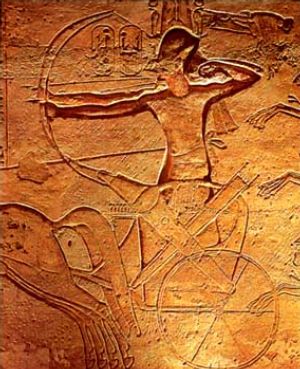9 Sept. King Rehoboam of Judah builds altars to Baal and Asherah
“Solomon’s son Rehoboam was 41 years old when he became king of Judah. His mother was Naamah from Ammon. Rehoboam ruled in Jerusalem for seventeen years…”
“The people of Judah did what the LORD said was wrong. Their sins made the LORD very angry, even more angry than he had been at their ancestors. The people built stone pillars and places to worship gods and Asherah idols on every high hill and under every green tree.”
“There were even male prostitutes in the land. They acted like the people who had lived in the land before the Israelites. They had done many evil things, and God had taken the land away from them.”
“During the fifth year Rehoboam was king, Shishak king of Egypt attacked Jerusalem. He took the treasures from the Temple of the LORD and the king’s palace. He took everything, even the gold shields Solomon had made.”
“So King Rehoboam made bronze shields to put in their place and gave them to the commanders of the guards for the palace gates. Whenever the king went to the Temple of the LORD, the guards carried the shields. Later, they would put them back in the guardroom.”
“Everything else King Rehoboam did is written in the book of the history of the kings of Judah. There was hostility between Rehoboam and Jeroboam [king of Israel] continually. Rehoboam, son of Naamah from Ammon, died and was buried with his ancestors in Jerusalem, and his son Abijah became king in his place.”
(1Kings 14:21-31)

Like King Jeroboam of Israel, King Rehoboam of Judah (who reigned from c.931 to c.914BC) also turned away from the LORD and worshipped foreign gods. During his reign, altars to Baal and Asherah were set up on the high places, and sacred ‘Asherah poles’ (fertility symbols representing fruit-laden branches) were erected under the shade of large trees.
In c.927BC Jerusalem (the capital of Judah) was attacked and sacked by Israel’s ally Pharaoh Ramesses II of Egypt (referred to, in Hebrew, as 'Shyshak', meaning ‘the plunderer’, or 'Shishak' in English). The temple treasures and all the wealth of the royal palace of Judah were carried off to Egypt.
Although the Bible tells us that Pharaoh ‘Shishak’ plundered Jerusalem, there is no record of a pharaoh called 'Shishak' in the numerous clay tablets and stone inscriptions that record the names of the kings of ancient Egypt.
In the early nineteenth century, ‘Shishak’ was thought to refer to Pharaoh Shoshenk I. The traditional system of dating Egyptian pharaohs and events during the United Monarchy and the Divided Monarchy was based largely on this identification. However, more recent examination of the campaign city list (adjacent to the Bubastite Portal at Karnak Temple) which records Pharaoh Shoshenk I’s military incursion into Palestine shows that he campaigned largely in northern Israel, and never plundered Jerusalem.
The Pharaoh who was responsible for plundering ‘Shalem’ (or Salem - the old name for Jerusalem – see Genesis 14:18) was Ramesses II. A stone inscription on the north pylon of the monumental gateway at the Ramesseum, Ramesses’ mortuary temple at Thebes, reads, “The town which the king plundered in Year 8 – Shalem”.
The photo shows an image at Abu Simbel of Pharaoh Ramesses II in his chariot during the Battle of Kadesh.
You can read more about Pharaoh ‘Shishak’ @ https://www.thebiblejourney.org/biblejourney2/32-the-divided-kingdom-amp-journey-into-exile/jeroboam-builds-temples-to-worship-baal/
